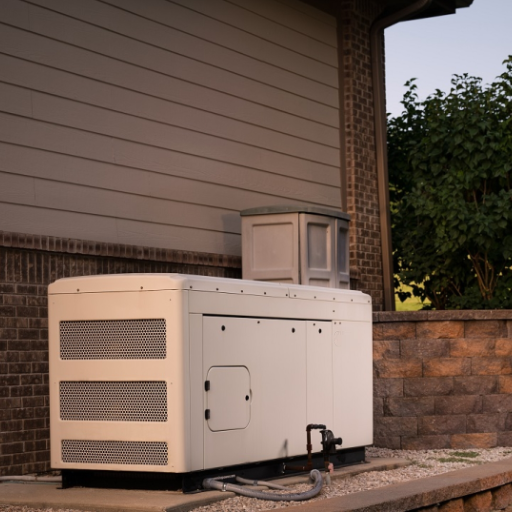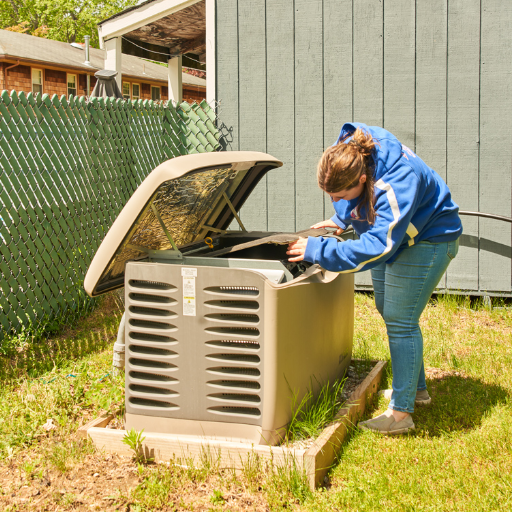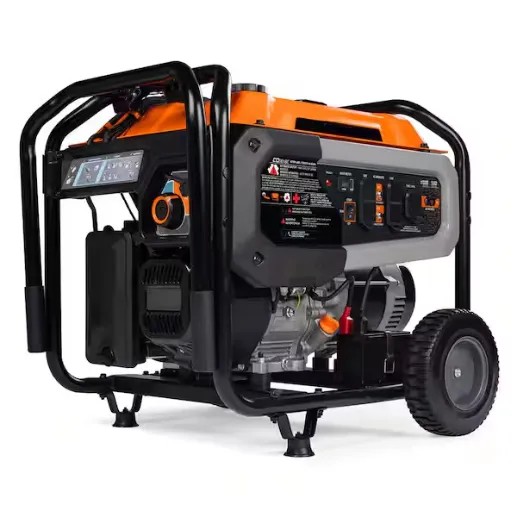Purchasing a full-house generator is a smart move that can provide high value and give you peace and energy during unexpected blackouts. However, the question remains: what are the expenses, and what should be considered before going for it? If you are looking for safety measures during bad weather, or you need a backup for your home office matters, or maybe you just need to secure your family from any untoward situation, cost and types of available alternatives are the factors that need to be looked at first. This whole guide is going to take you through the significant aspects, from the initial installation cost down to the later years’ maintenance so that you can be properly guided to make a selection that will suit your budget and your needs.
Understanding Whole House Generators
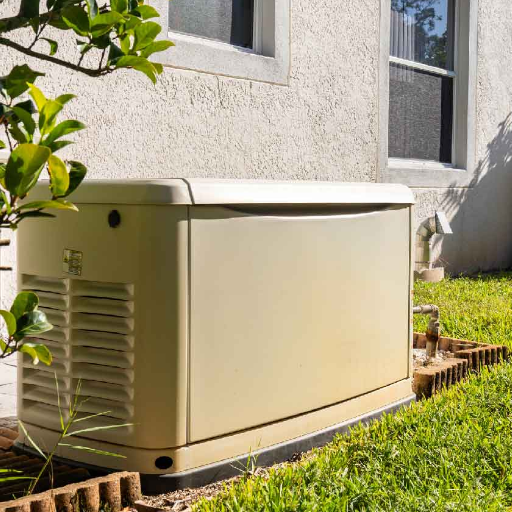
Be it a blizzard, snow, tornado, or flood – nature is not under the thumb, and for that reason, a reliable power supply is a must for the well-being of your loved ones. We do rely on electricity for almost everything nowadays, and the consequences of power failure can be far-reaching. There is an entire list of unpleasant situations you may encounter when the power fails, such as no lighting, no cooking, no cooling or heating, no refrigerator or water pumps, and no work being done. These are just a few examples of the possibilities when there’s no electricity at home, so when the power goes off, the generator steps in as the electricity source.
What is a Whole House Generator?
A whole-house generator is a backup power system designed to provide electricity to the entire residence during a power interruption. These devices are permanently installed outside the house, and they are connected directly to the electrical system, unlike portable generators. The whole-house generators are equipped with an automatic transfer switch for uninterrupted power distribution when the leading utility fails. I have come across these generators in different sizes, some of them being able to provide power only for the basic needs such as refrigerators, air conditioning systems, and lights, while others can completely supply power to a big household. The new generation is amazing, silent, fuel-efficient, and monitored. Hence, they are a reliable power source during blackouts, which is essential for our daily lives. However, installing a whole-house generator provides a sense of peace of mind and ensures that your house stays operational even if the power is cut.
Benefits of a Whole Home Generator
Uninterrupted Power Supply
A generator system installed in an entire home guarantees that the energy flow in your house won’t be disturbed even during conditions when the electrical grid is down. Power outages have hit an all-time high in the USA, with more than a 70% spike in frequency over the last decade, proving the increasing usefulness of backup generator systems.
Protection for Essential Appliances
The generator systems are generally configured only to power up the most essential appliances like refrigerators, HVAC systems, medical devices, and lighting. This is to avoid the aforementioned omniscient critical scenarios.
Enhanced Property Value
The market value of properties with a backup power generator rises. According to the real estate data, properties with the above systems are much more desirable and therefore would fetch a higher price when sold.
Fuel Efficiency and Cost Savings
From an energy perspective, modern generators for a complete house are much more fuel-efficient, meaning they require less gas or propane to produce energy stably. Hence, the cost of running these generators is less than that of older models or portable generators, in addition to the benefit of lower emissions.
Convenience and Automation
Considering the state-of-the-art technology, these systems can identify the problem in an instant and immediately start up, cutting the trouble of booting up a manually placed standby generator. In addition, a lot of the machines can be controlled through a smartphone application over the internet.
Weather Resilience
When compared to portable generators, home standby generators are made and designed to be exceptionally weatherproof, allowing them to operate during hurricanes, storms, or freezing conditions. This durability is also essential in areas where the weather is likely to be destructive.
How Does a Standby Generator Work?
Every time there is a power outage, a generator in a “dormant” state feels the problem thanks to the transfer switch. When this happens, it sends a start signal to the generator along with a portion of the house’s energy, with the grid previously being the source. After that, the generator delivers energy through its internal combustion engine, which runs on natural gas, propane, or diesel, among other fuels. As we mentioned, the generator serves as the provider in this case. When the utility power is back on, the transfer switch changes the source back to the grid, shuts down the generator, and then returns to standby mode. As far as the source of the power is concerned, very few conditions occur for such generators. That is because the seamless operation of these generators ensures the continuous provision of the standby power. They can only be equipped with the latest technology, allowing for precise control and monitoring of their functions. Such standby generators operate without any issues during outages, and they meet all the stringent industry requirements in accordance with applicable standards.
Cost Analysis of Whole House Generators
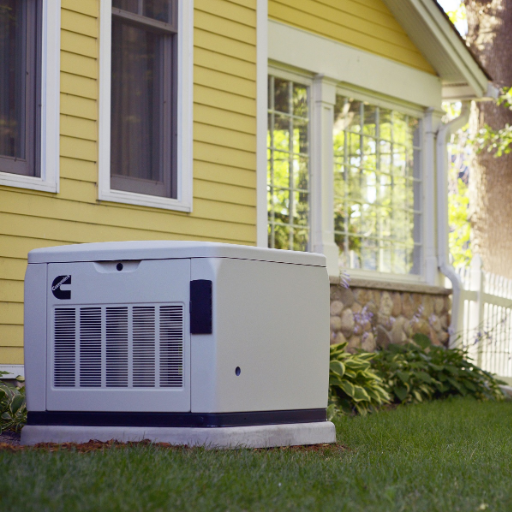
💰 Important Cost Information: The purchase price of a generator that can supply a whole house with power varies widely depending on the amount of power the generator can deliver, the manufacturer, and the installation requirements. The generator, with an average cost range of $3,000 to $10,000, is part of the cost. The cost of installations, which includes permits, transfer switches, labor, and other related expenses, adds up to between $2,000 and $5,000. In the case of a larger generator or a complex installation, the total cost could be more than $15,000. In analyzing costs, one must include the replacement costs of ECT elements, along with the production and warranty cover in the long term. The typical yearly cost for maintaining a generator, regardless of type or usage, ranges from $200 to $500. Choosing a very reliable manufacturer and taking full advantage of a warranty can lead to very minimal repair costs. The expenses for a complete power generator are generally high. Yet, it provides the buyer with the certainty that in the event of a power failure, they will remain online with power.
Factors Influencing Generator Cost
The total price of a generator depends on a variety of factors, such as its size, fuel type, and other features. The size of the generator, one of the most prominent factors, is proportional to the cost; larger machines that can produce enough power for an entire house will cost more than smaller portable units used with minimal appliances. On the other hand, the choice of fuel also has a very significant impact; generators that operate on gas or propane are likely to be more economical and efficient in the long term because of fuel accessibility and efficiency, while one-time and maintenance costs for diesel are likely to be the highest among the three fuel types.
Some of the advanced features are automatic start, remote monitoring, and noise-reduction technology. Such advanced features can impose an extra financial burden, but they can also enhance the convenience and performance of the product. Furthermore, the costs of installation must be considered, as having a whole-home generator set up can cost anywhere from $3,000 to $6,000 or more, depending on the complexity of the setup and the electrical supply. The recognition of these factors in depth allows the user to make decisions based on their energy needs and budget.
Average Cost of Installing a Whole House Generator
One would have to take into account both the price of a whole generator unit and the expenses of its installation to get the entire picture. Usually, the cost of a generator alone can vary from $2,000 to $10,000, depending on capacity, fuel type, and specific features like an automatic transfer switch or remote monitoring capabilities. The installation costs should be around $5,000 to $15,000, but they can increase for more complicated installations requiring extensive electrical upgrades or gas line modifications. The cost of labor and materials for installation may significantly vary across different regions, project difficulty levels, and the contractor’s expertise. The choice of propane or natural gas-fueled generators, which save homeowners from manual refueling and fuel price fluctuations, is a popular option for cost-efficiency. By taking a closer look at the costs, homeowners are enabled to prepare for the investments they will make, and at the same time make sure they get the right backup power source that will fit their demand.
Installation Cost Breakdown
Installing a backup generator usually involves shelling out for equipment, labor, and extra supply costs. If we take the generator itself as an example, its price could oscillate from just $2,000 for the small handheld ones to reaching the highest limits of $10,000 for the full-house standby systems. On top of this, labor costs could be significant, with installer charges ranging from $500 to $5,000, depending on the location, project difficulty, and necessary permits. Further, the support tools & materials like the switches, wiring, and fuel systems can contribute another $500 to $2,000 to the total cost. Expert mastery and thorough understanding of these things will enable the householders to make better-informed decisions about their backup power systems in line with their budget and usage.
Generators Installation Considerations
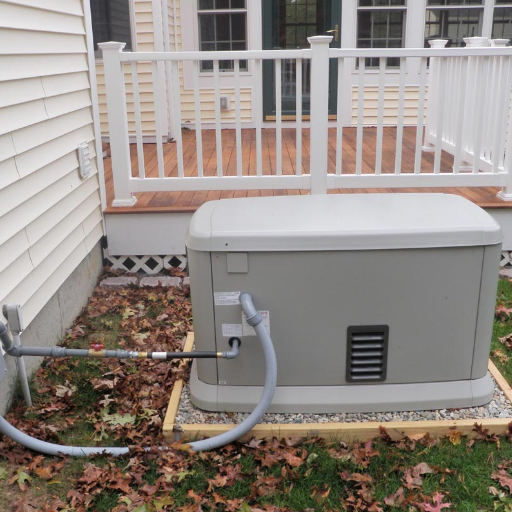
-
📍 Location
Appropriate and straightforward observance of fire codes, noise reduction, and safety at your installation site will be in your hands. It is flat and stable ground (a concrete pad is the best option) where the generator should be located, a minimum of 5 feet from windows, doors, and vents to avoid the hazards of the exhaust.
-
⚡ Power Requirements
Household electricity usage has to be your starting point. The wattage of essential appliances and systems should be the focus of your calculations to make your generator as efficient as possible.
-
📋 Permits and Codes
Fulfilling local building codes and acquiring the necessary licenses should be the first steps before operating the generator. Significant control over safety and situations that could lead to heavy fines is given to regulatory compliance.
-
👨🔧 Professional Installation
It is highly recommended to hire a licensed electrician or a certified technician for the proper wiring, integration of the transfer switch, and overall system installation.
-
🔧 Routine Maintenance
Develop and implement a regularly scheduled generator maintenance program, which will include activities such as oil changes, filter changes, and internal and external system checks, to ensure the system remains reliable during emergencies. Employ the manufacturer’s specifications for a foolproof job.
Choosing the Right Size for Your Home Generator
Since the proper selection of a generator sized to the home and supporting energy needs while the primary power source is out is a vital task, the starting point of your selection process will be the total wattage that you need to connect all the appliances and systems that, in the case of power failure, would correspond to your minimum comfort level. If essential appliances like refrigerators, air conditioning units, heating systems, and medical equipment need to be supported during a power outage, a large standby generator of approximately 7,000-20,000+ watts is typically the choice, capable of covering the entire house. In contrast, a small portable generator (3,000-6,500 watts) will supply you with the basics like lighting and small appliance usage through the process.
Load management technology is often associated with modern generators, which provide the means to allocate power load to preferred appliances. The use of several online tools and charts makes it easy to determine the wattage that household items typically consume. Moreover, contacting an expert to carry out an in-depth energy audit is the most effective way to find out the generator that will meet your house’s particular needs. To sum up, this kind of planning ensures operational reliability and trustworthiness in the event of an emergency.
Fuel Types: Natural Gas vs. Propane vs. Diesel
| Parameter | Natural Gas | Propane | Diesel |
|---|---|---|---|
| Availability | Continuous supply via pipelines | Requires storage tanks | Readily available at fuel stations |
| Storage Requirements | No storage needed | Tanks needed, above or underground | Stored in tanks, can degrade over time |
| Cost | Typically affordable | Moderate cost | Relatively high cost |
| Efficiency | Moderate efficiency | Higher efficiency than natural gas | Very efficient |
| Environmental Impact | Lower emissions | Clean-burning, fewer emissions | Higher emissions |
| Maintenance Needs | Minimal maintenance required | Requires periodic tank inspections | Frequent maintenance needed |
| Shelf Life | Unlimited, no storage issues | Long shelf life if stored properly | Shorter shelf life compared to others |
| Engine Wear and Tear | Minimal impact on engine | Low engine deposits | Higher wear due to impurities |
| Common Applications | Residential or commercial use | Portable and standby generators | Large industrial generators |
| Resilience in Emergencies | Dependent on pipeline infrastructure | Can be stored onsite | Durable in varied conditions |
Professional Installation vs. DIY
Regarding the installation of a generator, the decision between professional installation and doing it yourself is mainly determined by multiple factors, such as technical skills, cost, and potential future breakdowns. With the help of a certified expert, professional installation ensures that the generator is installed correctly, making it not only safe but also performing at its best. In addition, professionals can check the placement, ventilation, and wiring factors to minimize potential threats and ensure our actions are rule-compliant.
Conversely, a do-it-yourself setup could be an attractive option for users who are trying to cut initial costs, provided that they have the required tools and skills. However, a failure in the installation process could result in a problematic or inefficient operation, or even cause harm to the generator and the connected systems. Apart from that, the majority of generator manufacturers prefer to see an installation done by an expert to continue giving a warranty. If home or business owners decide in favor of a long-term, secure, and correct operating system, a professionally done installation can be considered the more dependable way.
Operational Expenses of Whole House Generators
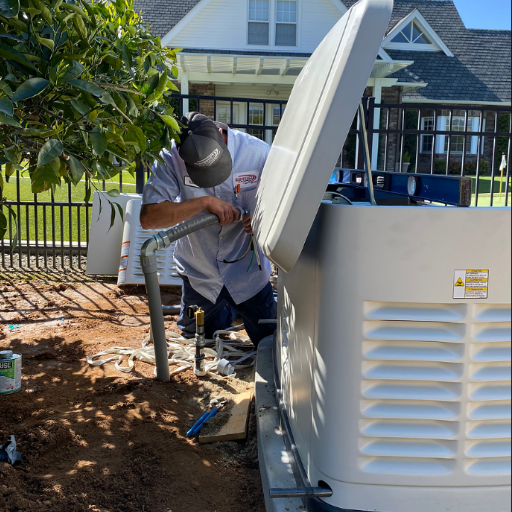
The running costs of the entire property include mainly the fuel costs, regular maintenance, and repairs, if any. Fuel costs are primarily related to the type of fuel the generator uses—natural gas, propane, or diesel—and the power capacity of the unit. The choices are mostly made regarding natural gas and propane due to their availability and the fact that they are considered to have a fixed price for a period of time.
It is paramount to have the generator run efficiently; maintenance, including oil changes, filter replacements, and inspections, should be performed. Maintenance frequency varies, but generally, generators need to be serviced at least once a year or after a certain number of hours of operation, as advised by the manufacturers. Though maintenance prices often fluctuate, regular maintenance financial planning can be very beneficial for averting unforeseen breakdowns.
Expenses for repairs might sometimes arise in case the machinery has deteriorated, which may affect the operational cost. However, one can minimize the possibility of repairs with proper fittings, regular tests, machinery in schedule, and maintenance (punctual). Generally, awareness of these expenses and the company’s build-up is essential for maintaining a power supply without interruption during emergencies.
Running Costs: What to Expect
The operation costs of a generator are influenced by various factors, such as the type of fuel it uses, its efficiency, and the amount of load required. It is common knowledge that diesel generators are usually more fuel-efficient than gasoline generators, which could lead to reduced fuel costs in the long run. Nevertheless, the price of fuel in your area, which may fluctuate from time to time, could still significantly affect the amount you will spend on operating the generator. Apart from that, power output directly affects the fuel consumption rate, as higher loads lead to increased fuel use. Besides the costs mentioned above, you should also consider the expenses for oil changes, new filters, and other consumables, all of which influence operational costs in the long term. If you keep a close eye on these parameters and choose a generator that matches your electricity needs, you will be able to manage the associated costs more effectively.
Maintenance Costs for Standby Generators
The longevity and reliability of standby generators are well-known to be secured only through a regular maintenance schedule. According to the industry’s suggestions, it is advisable to have the generator inspected professionally at least once or twice a year, depending on its usage. The costs of such visits for service can go up to the range of $200 to $500 yearly as they may include basic services such as replacement of oil and filters, verification of battery condition, and system checks for possible problems. The cost of replacing or repairing malfunctioning parts, such as transfer switches or switchboards, may exceed $500 or even $1000, depending on the component.
The type of fuel used also affects maintenance costs. For instance, diesel generators may require more frequent fuel system checks to prevent blockages, whereas natural gas generators often have fewer fuel-related troubleshooting needs. Some brands further recommend replacing or cleaning consumables like spark plugs or flushing the coolant system based on the generator’s total running hours or age, which may affect long-term costs.
Long-Term Value: Is a Whole Home Generator Worth It?
There are a number of reasons why investing in a whole-home generator might be a good idea. Firstly, it can provide a huge long-term advantage, particularly in places where power outages are quite common. The recent power transformation reports highlighted that the power grid condition, along with weather conditions, leads to increasing power failures, which, in turn, prompts homeowners to invest in alternative power solutions. The installation of a whole home generator not only means that power will always be available during outages, but it will also protect the vital appliances and systems. The protection provided will cover the HVAC systems, refrigerators, and medical appliances, which might all be damaged if the power goes off.
Besides being very comfortable, a home generator can be a good selling point. Houses with backup power systems are usually the first choice for buyers, especially in areas with poor electricity infrastructure. Moreover, the savings on electricity bills are significant; these systems eliminate the need to stay in hotels or repair damaged goods during extended power outages. With fuel consumption and automatic maintenance alerts improving, today’s home generators are becoming less expensive, and it is easier to keep them running. For those who want to be secure in their houses and have no trouble with the power, a home generator is a win-win investment for sure.
Visual Resources and Tools
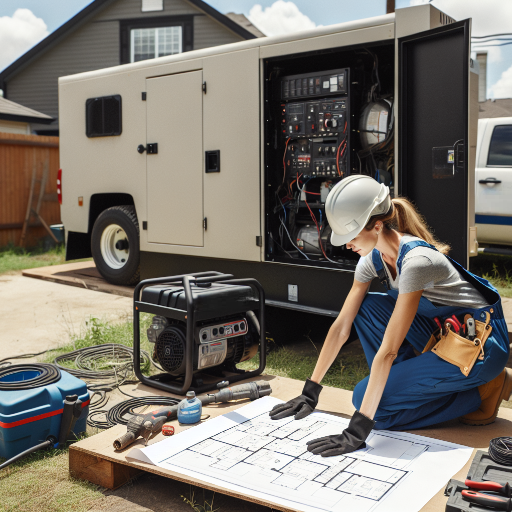
- ✓
Manufacturer Websites: Most of them offer plenty of pictures, which may include 3D models, diagrams, and installation guides, which are very helpful to homeowners in exploring various features and compatibility - ✓
Video Tutorials: Major video-sharing websites like YouTube are full of videos made by professionals explaining the generator in a user-friendly way, how to operate, maintain, and troubleshoot it. - ✓
Interactive Tools: Various manufacturers and third-party sites offer interactive sizing calculators to help select the right generator size based on a home’s energy needs. - ✓
User Manuals and Guides: Installation and operation are explained through step-by-step instructions that come with downloadable, often visual manuals. - ✓
Home Improvement Stores: Brochures, generally containing visual aids and model-to-model comparison tables, are usually handed out by home improvement stores such as Home Depot and Lowe’s.
Step-by-Step Guide to Installing a Whole House Generator
Choose the Right Generator
The first step is determining the right generator size and type for your house. The entire area in your home will need only one appliance to have the necessary power. Then you can either use the interactive sizing tools or consult experts to choose the best options.
Pick a Location
One should be very careful and consider all the proper codes and rules before deciding on the installation site. The location must be well-ventilated, easy to reach and situated a safe distance away from any flammable materials or sources of fire.
Prepare the Installation Site
One way to start is to establish a strong, unyielding base, which could be either a concrete pad or a gravel pad, to carry the generator’s weight. Your first line of defense is to clear the area of anything that may hinder the proper drainage of the water and, thereby, cause a hazardous situation surrounding the unit.
Install a Transfer Switch
The task of integrating the generator into your house’s electrical system should be entrusted to an electrician with a valid electrical license. This must be done not only to prevent the occupants from feeling a power outage but also to ensure the grid is not supplied with electricity from the generator.
Connect Fuel Source
Depending on the type of generator you own, you need to find a suitable fuel source (natural gas, propane, or diesel) to connect to it. For safe and proper installation per local codes and regulations, we strongly advise you to get professional help.
Wire the Generator
Allow the generator to be incorporated into the transfer switch and the main electrical panel safely. Only after checking that the connections have been properly made and comply with all safety regulations will the installer have done everything.
Conduct Initial Testing
After the installation is complete, the generator should be tested to ensure the machine is running smoothly. There should be a simulated power outage to check if the transfer switch engages and if the home’s vital systems receive power seamlessly.
Perform Regular Maintenance
If you want your generator to serve you for a long time, follow the manufacturer’s maintenance requirements that usually include a schedule. Ensure the parts are in good shape, change the filters, and always maintain enough fuel supply to cover needs when an emergency occurs.
Comparison Charts of Generator Costs
| Feature | Budget Generators | Mid-Range Generators | High-End Generators |
|---|---|---|---|
| Price Range | $200 – $500 | $500 – $1500 | $1500+ |
| Power Output | Up to 3000 watts | 3000 – 7000 watts | 7000+ watts |
| Fuel Type | Gasoline | Gasoline, Propane | Multiple options |
| Noise Levels | 65+ decibels | 50 – 65 decibels | Below 50 decibels |
| Usage Duration | Up to 8 hours | 8 – 15 hours | 15+ hours |
| Portability | Lightweight, compact | Medium portability | Heavy, limited mobility |
| Maintenance Requirements | Low to moderate | Moderate, straightforward | Advanced maintenance |
| Warranty | 1-2 years | 2-5 years | 5+ years |
| Best Use Cases | Small appliances, camping | Homes, RVs, workshops | Whole-home, industrial |
Reference Sources
📚 Techno-economic analysis of high-efficiency natural-gas generators for residential combined heat and power
Summary: This study evaluates the economic and technical feasibility of high-efficiency, low-cost natural gas generators for residential combined heat and power (CHP) systems.
📚 Feasibility analysis of a renewable hybrid energy system with producer gas generator fulfilling remote household electricity demand in Southern Norway
Summary: This paper explores the feasibility of a hybrid energy system combining renewable energy sources with a producer gas generator to meet electricity demands in remote households.
Frequently Asked Questions (FAQs)
❓ What is the Cost of Installing a House Generator?
Getting the entire property generator can be quite costly. The total cost of setting up such a system depends on various factors, including the generator’s price, labor charges, and the costs of electrical work if additional services are requested. The price range one may expect to pay initially could be as low as $5,000 and go up as high as $15,000. Just the size of the generator and the difficulty of the installation determine the price. One factor to consider is the market price of the house and how a reliable backup system can positively affect it. The expectation is that the fuel type is a very critical factor in the overall cost that will be spent and this should right away make the possibilities of the gas type a subject of discussion; one may need to have a new gas supply pipeline or procure a propane tank in which the gas would get filled, and this will also shoot up the whole cost.
❓ What Factors Determine the Cost of a Whole Home Generator?
The whole home generator prices depend on a variety of factors, such as generator size, installation difficulty, and fuel type. Similarly, it will cost more when you buy a larger generator that can run more appliances. Aside from the above, the more modifications the household electrical system requires for the generator connection, the more the total cost will increase. The overall cost of installing a domestic power supply may also involve the installation of an automatic transfer switch (ATS), which can be pretty high. The location and the installers’ availability are also important factors that can influence the pricing. All the factors must be considered, and the budget for a standby generator must be set accordingly.
❓ How Much Does a Whole Home Generator Weigh and Its Impact on Installation Cost?
The weight of the whole generator can significantly influence the expense of installing a house generator. Therefore, the heavier the unit, the greater the possibility that the installation process will require more support or a more solid groundwork. In general, the weights of Complete Home Generators range from 300 to 1500 pounds, depending on the model and size. The hefty end of the range for generators may require exceptional handling during installation, which will result in extra labor costs. Moreover, you need to check if the home can structurally support the standby generators. This particular part of the installation process must not be overlooked, as it can also contribute to the total cost of a whole-home generator installation.



